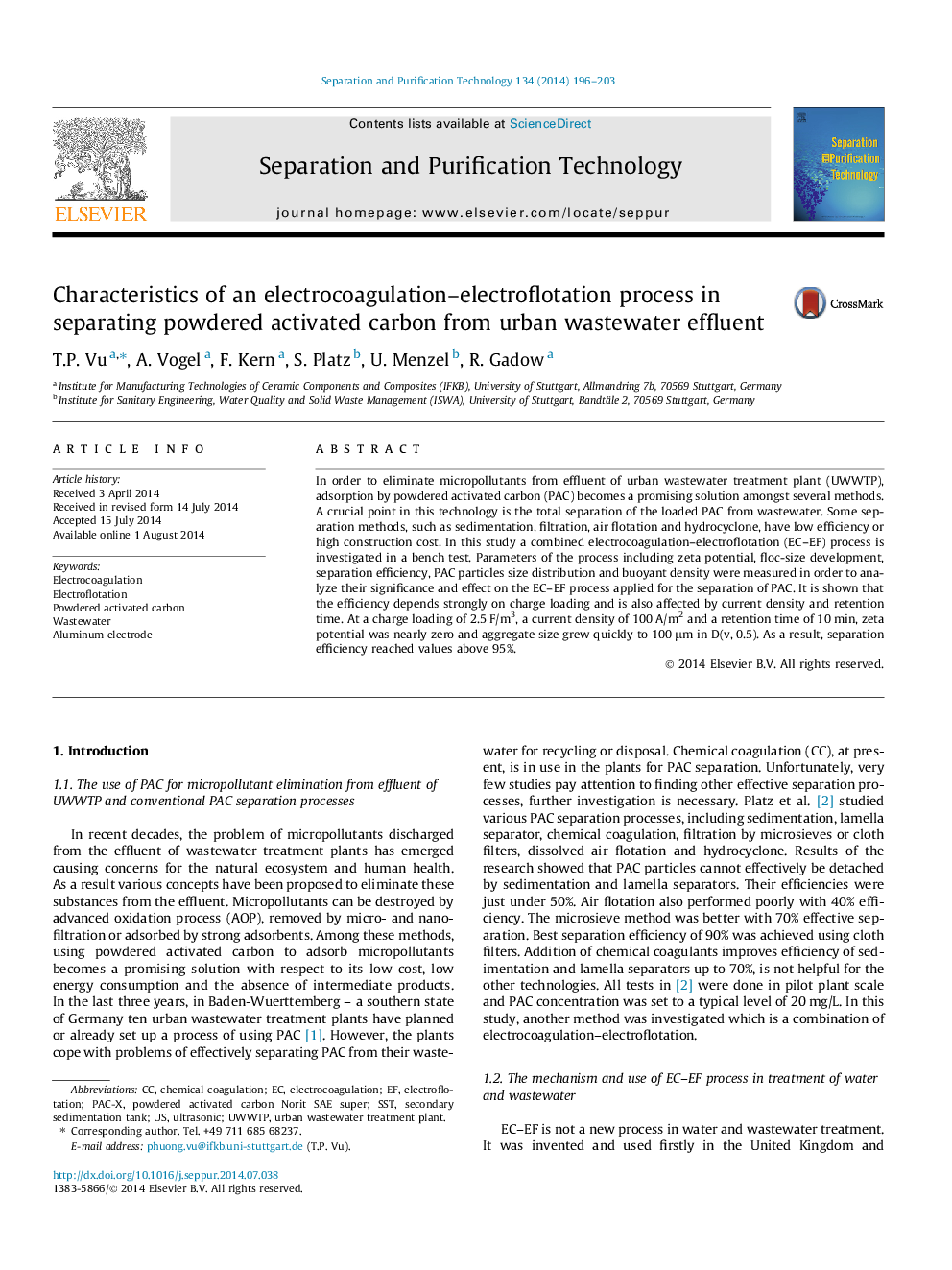| Article ID | Journal | Published Year | Pages | File Type |
|---|---|---|---|---|
| 641170 | Separation and Purification Technology | 2014 | 8 Pages |
•Buoyant density of Norit PAC in aqueous media was as small as 1.34 g/cm3.•EC–EF can effectively separate the fine PAC particles having the low buoyant density.•By consuming 2.5 F/m3, 100 A/m2 and 10 min, separation efficiency (E) was above 95%.•At this charge loading 2.5 F/m3, zeta potential of flocs was 0–3 mV; their size increases to 100 μm.•E depends strongly on charge loading and is affected by current density/retention time.
In order to eliminate micropollutants from effluent of urban wastewater treatment plant (UWWTP), adsorption by powdered activated carbon (PAC) becomes a promising solution amongst several methods. A crucial point in this technology is the total separation of the loaded PAC from wastewater. Some separation methods, such as sedimentation, filtration, air flotation and hydrocyclone, have low efficiency or high construction cost. In this study a combined electrocoagulation–electroflotation (EC–EF) process is investigated in a bench test. Parameters of the process including zeta potential, floc-size development, separation efficiency, PAC particles size distribution and buoyant density were measured in order to analyze their significance and effect on the EC–EF process applied for the separation of PAC. It is shown that the efficiency depends strongly on charge loading and is also affected by current density and retention time. At a charge loading of 2.5 F/m3, a current density of 100 A/m2 and a retention time of 10 min, zeta potential was nearly zero and aggregate size grew quickly to 100 μm in D(v, 0.5). As a result, separation efficiency reached values above 95%.
